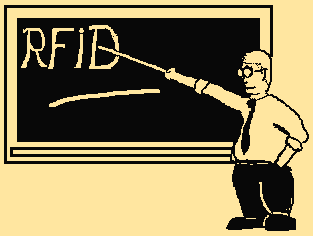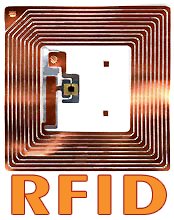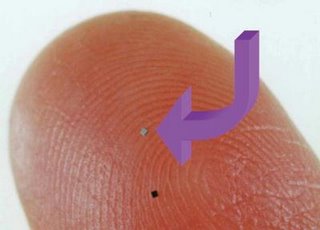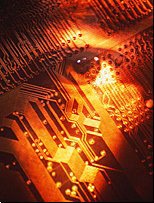ElectriPlast: What's Next? Enter RFID...

Synergy
Exists
By PK & Vince S.
ElectriPlast Blog Publisher / Editor-in-Chief
Due Diligence contributed By UK Investor
Gary Cooper
Can Integral Technologies improve on this emerging technology? The following might surprise you. . .
Among the many intellectual patents Integral Technologies will bring to the marketplace, several are bound to revolutionize the emerging technology called RFID. The term, “emerging technology,” is used loosely because previous iterations of RFID can be traced to the 1920s. During WWII, the British used a form of RFID technology to determine if approaching aircraft were “friend or foe.” However, true RFID systems have only been around since the late 1960s.
But first, what is this "RFID," and how would ElectriPlast's applications impact that emerging technology?
Before getting to the heart of those questions, let's validate the notion that Integral has cast an eye this direction, and that ElectriPlast, in fact, intends to play a role in this emerging market.
RFID antennas are formed of a conductive loaded resin-based material. The conductive loaded resin-based material comprises micron conductive powder(s), conductive fiber(s), or a combination of conductive powder and conductive fibers in a base resin host. The percentage by weight of the conductive powder(s), conductive fiber(s), or a combination thereof is between about 20% and 50% of the weight of the conductive loaded resin-based material. The micron conductive powders are formed from non-metals, such as carbon, graphite, that may also be metallic plated, or the like, or from metals such as stainless steel, nickel, copper, silver, that may also be metallic plated, or the like, or from a combination of non-metal, plated, or in combination with, metal powders. The micron conductor fibers preferably are of nickel plated carbon fiber, stainless steel fiber, copper fiber, silver fiber, or the like.
Let's answer the question, what is RFID?
Radio Frequency IDentification, or RFID, is a generic term for technologies that use radio waves to automatically identify objects. RFID tags are small transponders that are attached to or embedded in a product (a box of nails), an animal (put away that branding iron, partner) or a person (wave your hand to authorize your credit card purchase, sir).
What does RFID technology look like?


Left, Internal Components.
RFID technology comes in varying sizes and configurations and can be customized to suit a manufacturers’ specifications. Basically, the RFID concept consists of a “tag” and a “reader.” Tags are passive, semi-passive and active. Passive tags have no battery. They draw power from the reader which emits electromagnetic waves that induce a current in the tag's antenna.
Semi-passive tags use a battery to run the chip's circuitry but communicate by drawing power from the reader. Active tags have a battery which is used to run the microchip's circuitry and to broadcast a signal to a reader, similar to the way a cell phone transmits signals to a base station.
Over the past decade and unbeknownst to most, RFID has been slowly changing the way we travel, shop, fight, and stay well among other aspects of life. Governments worldwide are using pre-paid transponders to speed commuters along toll roads. Wal-Mart, the world’s largest retailer, has required its top 100 suppliers to apply RFID tags to all shipments to facilitate the Wal-Mart supply chain.
The US Department of Defense has ordered the implementation of RFID as a critical part of our End-to-End Warfighter Support initiative. (Pentagon-speak for world-wide logistical support!)
The US State Department and the passport authorities of France, Malaysia, New Zealand, Norway and Pakistan (others will catch on, eventually) are embedding various forms of RFID technology in passports to facilitate efficient machine reading of immigration, customs and security watchlist data.
RFID chips containing complete medical records and biometric data have been implanted in a small number humans. (This means the end of photo IDs, lost medical records, passwords, etc.).
Livestock ranchers long for the day when they can drive through a heard (or fly over one) and take inventory with an RFID reader. Of course, with every disruptive innovative technology, society must consider the social consequences. In the case of RFID technology, some privacy advocates are concerned that civil liberties may be infringed if RFID reader technology falls into the wrong hands. For instance, that surgically implanted biometric RFID chip could reveal your entire medical history if an unscrupulous person got their hands on an RFID reader. Or, to quote California State Senator Debra Bowen during a 2003 hearing on privacy, "How would you like it if, for instance, one day you realized your underwear was reporting on your whereabouts?" Well, senator, Integral can always password that RFID chip!
Enter Integral Technologies and ElectriPlast.
At last count, Integral Technologies had over 100 patents granted, in the provisional stage or in the submission stage. According to Tom Aisenbrey, the Wizard of Bellingham, many more ElectriPlast patents are just over the horizon. Among these are several that are likely to have a disruptive impact on Radio Frequency Identification technology. These are: PlastiRFID, a low cost, highly effective RFID tag and PlastiLabel, an innovative RFID label.
Stay tuned, folks. This frequency will become red hot before long, thanks to Integral Technologies!
Additional Resources on RFID:
- SAVI.com - Learn about RFID
- RFID Resource Center
- The New Frontier: RFID & Event Stream Processing (Webcast)
- Turn RFID Data into Business Decisions by Leveraging ALE (Webcast)
- Progress.com - What is RFID
- RSA Laboratories - RFID Privacy and Security
- ProMat 2005 RFID Knowledge Center
- RFID - Weblog
- EP Blog Game Plan Press Release








2 Comments:
Hello Sir:
I recently received an email advertising Integral Technologies from Tobin Smith. He's the head of Changewave Investing at Changewave.com. (ITKG.OB) He is predicting this thing is going to be huge. What kind of timeline would you predict for this stock to take off? I'm seriously thinking about getting in on it, but I need to make sure that its not a pump and dump scheme, as many stocks selling at this price are. If this is 100% legit, then I'll put some serious money in it. Mr. Smith advertised that Bill Gates's father is a lawyer who helped this company get its work patented and took payment for his services in the form of company shares. If this is also true, then this is also a good sign. I have two more weeks till I get paid again and then I will have money to be able to put some money into the market. I'd like to be able to talk more in depth about this company since you appear to be pretty knowledgeable about it. You can reach me at mrtoyota2001@yahoo.com. Any additional insight you could provide me with about this groundbreaking company would be appreciated.
Sincerely,
Brian
I am usually to blogging and i genuinely appreciate your content regularly.
Post a Comment
<< Home